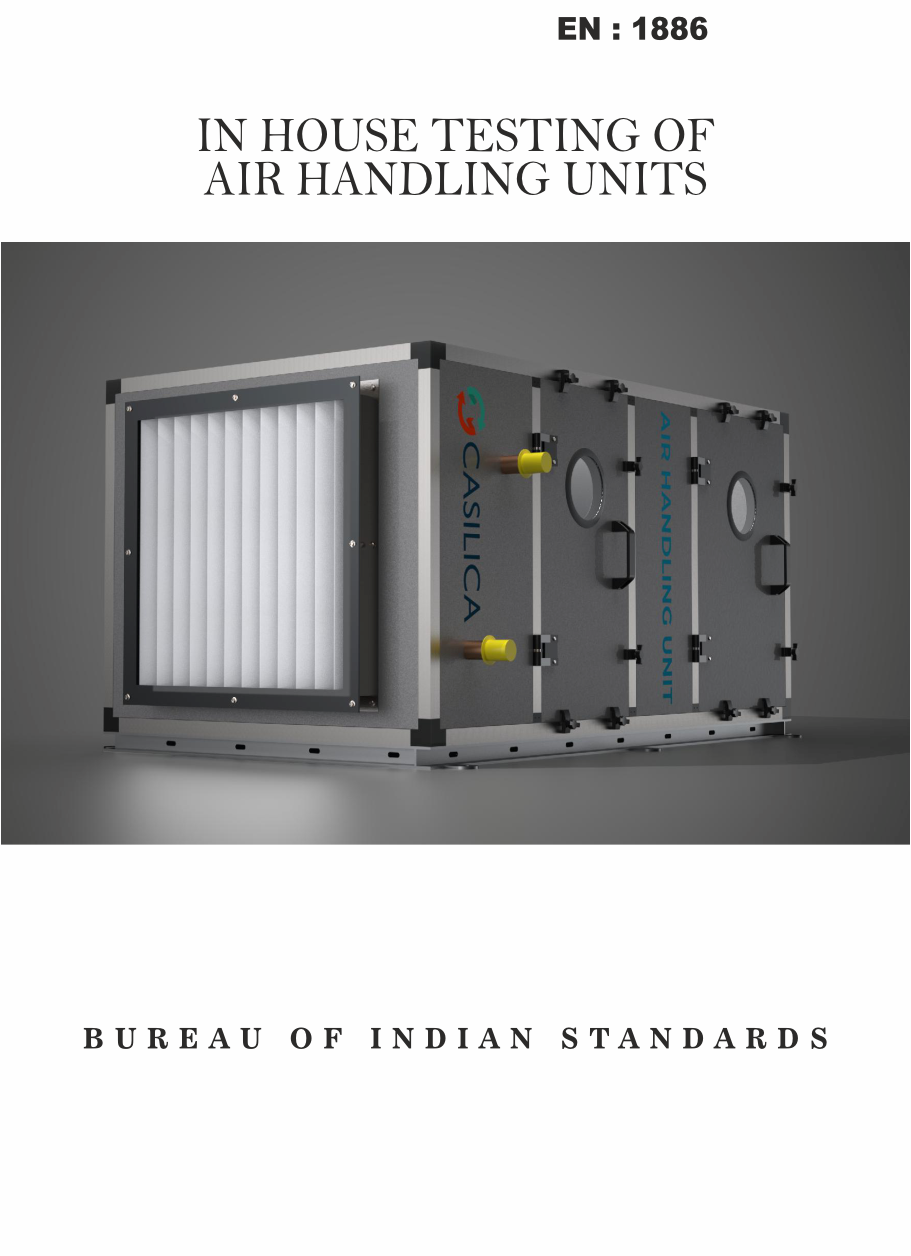Our AHU-Lab has test facilities, which enable the testing of the efficiency, performance of Air Handling Units. We offer a wide range of testing services of Air Handlings Units.
Research and development
Air leakage testing facility1 The ‘air leakages’ problem
Most HVAC planners and contractors are aware of air leakages associated with AHUs. Not all of them consider these leakages when designing the system. Even fewer realise how large these leaks can be if the AHU is not designed properly and what are the related consequences. This chapter provides a consistent overview of the types of leakage and their effects. It also discusses the status of current formal requirements for internal leakages.
1.1 Kinds of leakages
There are different types of air leakages associated with AHUs. Whereas this Recommendation focuses on the internal leakages, the other kinds of leakages must be considered in the product assessment as well.
1.1.1 Internal leakages across heat exchanger and AHU casing
Internal leakages are unwanted air transfers from the exhaust air stream into the supply air stream and vice-versa. This type of leakage can occur only in bidirectional ventilation units. They typically occur inside the AHU but also can occur outside the unit in case of wrong ductwork installation (e.g. the exhaust and outdoor air intakes are too close to each other).
1.1.2 External leakages
External leakages are unwanted air transfers from inside the AHU to outside (positive leakages) and vice-versa (negative leakages). Both bidirectional and unidirectional ventilation units are affected by this type of leakages. External leakages mostly depend on the quality of the AHU casing. In both cases (positive or negative leakages), depending on the location of the AHU and the ambient air quality, such leakages can lead to a problem with IAQ. External leakages also cause a problem with energy lost on air volume, heat or cold.
1.1.3 Filter by-pass leakage :
Filter by-pass leakage is unwanted untreated air transfer into the treated air bypassing filter media.
Depending on the filter location inside the AHU, high filter by-pass leakage has two negative
consequences: lower IAQ and unprotected internal AHU components. Filter by-pass leakage depends
on the construction quality of the filter frame.
1.1.4 Leakage between ODA inlet and EHA outlet
Exhaust air can contaminate the supply air also outside the building. This can happen when the ODA
inlet and the EHA outlet are too close to each other, when exhaust air flows are directed wrongly, or
when wind directs the exhaust air to the supply air intake. This shortcut of airflows is not directly a
leakage but will contaminate supply air in similar ways as internal leakages. Therefore, it needs to be
considered and excluded when looking into problems of supply air contamination in ventilation
systems.
T2 gives a level of insulation similar to that of external doors; which is appropriate for air handling units. T5 means that the unit has such a bad U value that it is considered unclassified.
Thermal bridging causes some heat losses, but the main problem is that of condensation. Condensation needs to be avoided because it can lead to corrosion and hygiene problems. In cold climate it can even lead to the formation of ice on the casing.
Five classifications are defined from TB1 to TB5 where TB1 is the best and TB5 means unclassified. The TB value tells us what the temperature difference between the ambient and any point on the outside surface of the casing. It is the ratio of the surface to ambient temperature and the internal to ambient temperature. The theoretical maximum value of TB is 1.0
With a classification of TB2 the point with the lowest surface temperature would be at 8 C when the ambient air is 20 degrees and the air inside the unit is 0 C. With a normal plantroom humidity, the risk of condensation is low but if the TB value is lower then the risk is, of course higher.


